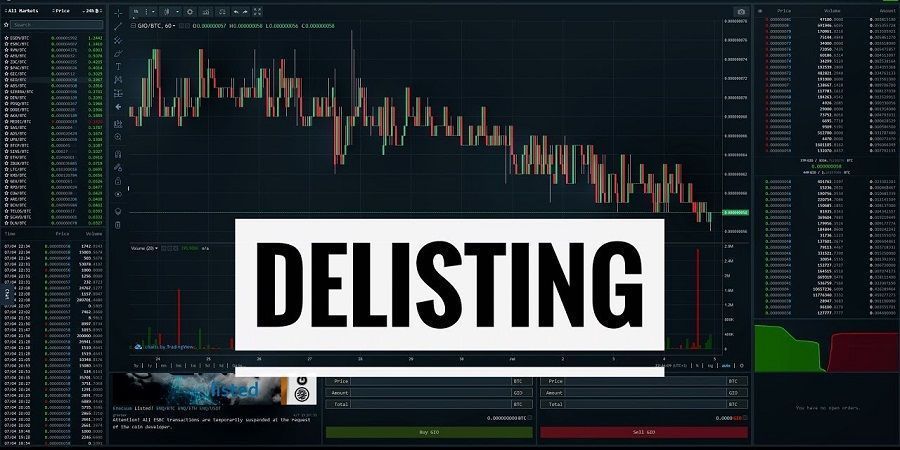What is delisting of shares in simple terms.


Earnings on stocks can be quite complex, but many of the difficulties are compensated by good income. To obtain income, one needs to understand what delisting is. In simple terms, it is the process when a company's shares are excluded from the list of securities. We are talking about those securities that usually participate in trading on the exchange.
Also, while understanding what delisting of shares is, it is important to understand how exchanges actually work. Moreover, delisting of shares is a complex and diverse process. It is necessary to understand what this is by exploring how the whole process is structured.
What is delisting?
So, delisting is an entire process when a company's shares will no longer be available for buying and selling on public exchanges. In this case, there are many different exchanges, but these are the most authoritative.

As soon as this process occurs, companies can no longer trade their shares on the open market, and the company needs to find other ways to resell them if necessary.
In general, there are several reasons for this process. They do not occur very often, but all of them should be taken into account. The most significant reasons are:
- Shares no longer meet the requirements set by the exchange. For example, the exchange may require that the price of the shares does not fall below a certain level or that the company provides regular financial reporting. If the company does not meet these requirements, its assets are simply 'thrown out' of trading.
- There is also the understanding of a forced delisting. This is a delisting decided by the exchange when the company violates rules and requirements. For example, the exchange may remove a company's shares if the latter fails to meet financial obligations, does not provide transparent data, or violates laws.
- There is also a voluntary process. In some cases, the company itself may decide on delisting. This can happen when the company no longer wants to be public, that is, be traded on the exchange, and decides to become private. Such a decision is often related to a desire to reduce costs on public reporting or to avoid pressure from shareholders.
Other reasons affect this process to a lesser extent.
What types of delisting exist?

There are different shares, different situations, and reasons for declines of certain assets, so there are also different types of delistings. Usually, to simplify, they are divided into 2 types:
- Forced delisting. It occurs at the initiative of the exchange when the company does not comply with the rules.
- Its opposite can be considered voluntary delisting. It occurs at the decision of the company itself, usually in connection with a transition to private status.
The chosen type of delisting also directly depends on the accompanying conditions.

In other words, exchanges set requirements for companies that want their shares to be traded on the public market. Non-compliance with these conditions may lead to delisting. What conditions are indeed important:
- Market capitalization (minimum). The exchange may set a minimum market capitalization value (the total value of the company’s shares), and if the company does not meet this level, it may be excluded.
- Share prices have also fallen to minimum levels. If the price of a company’s shares falls below a certain level (for instance, $1 per share on the NASDAQ stock exchange), the exchange may issue a warning and then initiate the delisting process.
- Don’t forget about financial reporting. Companies are required to regularly provide transparent and accurate financial reporting. Failure to comply with this condition or delays in reporting may lead to delisting.
A few words should also be said about capital and assets. If a company loses assets or capital, which reduces its financial stability, the exchange may initiate delisting to protect investors.
What is important in the delisting process?

Delisting, as a process, can be divided into logical stages. Usually, they are universal for different types of delisting. What is being discussed:
- To begin with, a notification comes that a violation has occurred. The exchange sends a notification to the company that it does not meet the requirements and must take measures to comply.
- Next, the exchange gives a period in which violations can be corrected. The exchange may give the company a certain Time to correct the situation. For example, if the company’s share price is below the minimum, it is given 90 days to raise it.
- A decision on delisting may then be made. If the company does not correct the situation, the exchange makes a decision on the delisting of shares.
- Afterwards, trading ceases. After the announcement of delisting, the company is no longer available for trading on the exchange.
This process may have additional factors, but this happens much less frequently.
What happens after delisting?

So, if delisting has already occurred, it is important to know what happens next. The main consequences undoubtedly concern companies. What is being discussed:
- The liquidity of shares sharply decreases. After delisting, a company’s shares are no longer traded on the exchange, making it difficult to buy and sell them. Investors may find it challenging to find a buyer for their shares.
- Inevitably, the value of shares changes. Generally, delisting negatively impacts the value of a company’s shares, as investors begin to doubt its stability.
- Investors lose their trust in the assets of a specific company. Delisting can undermine trust in the company, especially if it occurs due to financial difficulties or non-compliance with requirements.
In turn, shareholders should think about what to do next. They may sell shares while the process is still not completed. If there is knowledge of an impending delisting, shareholders may sell shares in advance to minimize losses. This way, they can minimize their losses. One can also consider selling on the over-the-counter market. After delisting, some shares can be sold on the over-the-counter market (OTC), although liquidity there will be lower. Alternatively, one can wait for the company to buy back shares. In the case of voluntary delisting, the company may offer to buy back shares from shareholders so that they can recover part of their investments.
Read also
- Peanut cryptocurrency sharply increased in price — what does Elon Musk have to do with it
- What is the Solana cryptocurrency in simple terms
- What is cryptocurrency Ethereum in simple terms
- What will happen to cryptocurrency in 2025
- What Will Happen to Bitcoin in 2025
- The Best and Most Popular Altcoins: Top 10 Rating









